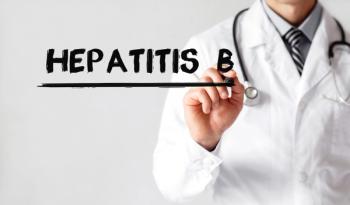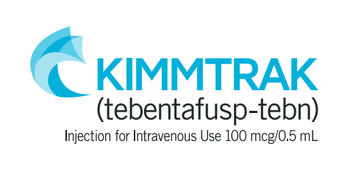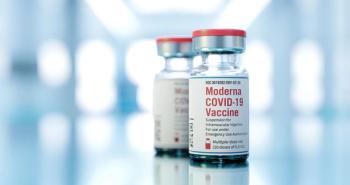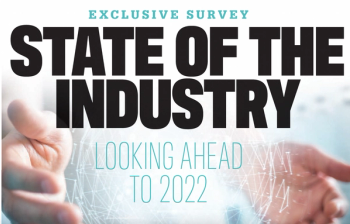
Findings reported in JAMA Network Open show that patients with chronic hepatitis B didn’t reap the benefits of price competition as the number of generic suppliers of the antiviral increased from one to 11.

Findings reported in JAMA Network Open show that patients with chronic hepatitis B didn’t reap the benefits of price competition as the number of generic suppliers of the antiviral increased from one to 11.

Staffing challenges within the healthcare revenue cycle impede productivity, increase burnout.

A Congressional Budget Office puts some numbers to the common knowledge that commercial payers pay providers significantly more than Medicare fee for service. The consequences include lower taxable wages and escalating federal subsidies of health insurance.

The new therapy treats patients with unresectable or metastatic uveal melanoma.

The U.S. Food and Drug Administration approved the second COVID-19 vaccine known as Moderna. The approved vaccine will be marketed as Spikevax for the prevention of COVID-19 in individuals 18 years of age and older.

Price increases on promising non–small cell lung cancer drugs despite evidence price competition raise concerns about affordability.

Perfect score from Human Rights Campaign Foundation highlights health company's commitment to LGBTQ+ equality.

Although systemic therapy improves survival for patients with advanced unresectable hepatocellular carcinoma (HCC), uptake was low and dose reductions were common, according to a real-world Canadian study.

Regeneron Pharmaceuticals and Sanofi said they are voluntarily withdrawing their supplemental Biologics License Application (sBLA) for Libtayo (cemiplimab-rwlc) as a second-line treatment for patients with advanced cervical cancer.

African American patients had 2.54 times the adjusted odds of having one or more negative descriptors in their Electronic Health Record compared to White patients. However, this form of racial bias can be avoided with a simple solution.

Humira may sink even further in the drug spend rankings next year when six biosimilars are expected to hit the market.

The CMS saw good news in its annual report on the federal healthcare agency’s largest ACO program. The National Association of ACOs say the report shows the program is shrinking and needs changes.

More than $250 million worth of counterfeit and illegally resold versions of Gilead Sciences’ HIV medications Biktarvy (bictegravir, emtricitabine and tenofovir alafenamide) and Descovy (emtricitabine and tenofovir alafenamide) were distributed to pharmacies and patients.

In this episode, Peter Wehrwein, managing editor of Managed Healthcare Executive, speaks with Dr. Rodrigo Cerda. Dr. Cerda has been recently promoted to the position of senior vice president of health services and chief medical officer of Independence Blue Cross in Philadelphia. He is also a member of Managed Healthcare Executive’s editorial advisory board. Peter and Dr. Cerda discuss his new role at the Independence Blue Cross, what it means to be a chief medical officer at an insurer these days, valued-based care, social determinants of health, and, of course, the pandemic.

A 2022 report by the Department of Labor cites specific examples of health plans and health insurance issuers failing to ensure parity. For instance, a health insurance issuer covered nutritional counseling for medical conditions like diabetes, but not for mental health conditions such as anorexia nervosa, bulimia nervosa and binge-eating disorder.

A look inside six trends that will shape and influence care, planning and performance over the next year for health plans.

The introduction of an electronic tracking system decreased the time from hepatocellular carcinoma (HCC) diagnosis to treatment by more than a month.

The true key to achieving high savings, more patient volume, and better health outcomes is to effectively use clinical and cost data with physicians to create interventions that improve performance.

Authors of an article in Health Affairs about a program for smaller and rural ACOs say their finding show those kinds of ACOs can generate major savings for Medicare, but apprehension about downside risk prompted an exodus from the program.

The global cancer immunotherapy market is set to grow at a compound annual growth rate, or CAGR, of 12.6% to $277.1 billion by 2030.


Price transparency is a primary focus for health plans in 2022 to support rising consumer demand for improved healthcare experiences and align to federal price transparency mandates.

The new Medi-Cal Rx program that debuted Jan. 1 has alarmed health clinics that say the state's Medicaid will lose money and have to cut services.

Real-time notifications accelerate accurate care management. To deliver better and more timely care management to patients, payers should work with providers to adopt a technology-agnostic communication strategy .

Our survey results reflect the reality that American healthcare is inching not galloping to value-based care.

A longitudinal study of 10 million people in the U.S. military shows the link. The researchers say genetic predisposition, other factors are likely needed for the viral infection to cause multiple sclerosis.

The company joins the wide array of online pharmacy services, such as Amazon Pharmacy, that have popped up in recent years. Cuban has also launched a namesake PBM.

Many have claimed that technology will be the great equalizer in healthcare. While technology is objective and purely data-driven and without prejudice, there can still be inherent biases that hamper the ultimate goal of health equity.

Many of the darkest fears about COVID-19 affect on people with HIV have not come to pass. According to a recent review, some evidence suggests that people with HIV may be more likely to develop a severe case of COVID-19, although it isn’t certain. Antiretroviral therapy, especially Truvada, may provide some protection against infection and severity.

The Janssen drug is the only DOAC available in an oral suspension, which facilitates pediatric weight-based dosing.